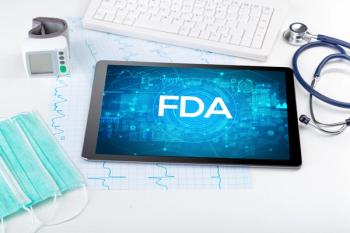
Overview of Biosimilars in Oncology
Ryan Haumschild, PharmD, MS, MBA, defines biosimilars in oncology and what distinguishes them from a reference biologic.
Episodes in this series

Bhavesh Shah, RPh, BCOP: Hello, and welcome to this Directions in Oncology Pharmacy® Peer Exchange. We’re going to be talking about the adoption of oncology biosimilars into clinical practice. I’m Bhavesh Shah, the senior director for the hematology-oncology program at Boston Medical Center. I’m joined by my esteemed colleagues today, Brandon Dyson, who is a cofounder of tl;dr pharmacy, the pharmacy manager for Texas Oncology in Austin, and an assistant professor of pharmacology for Georgetown University School of Nursing & Health Studies. We’re also joined by Ryan Haumschild, the director of pharmacy services of Emory Healthcare in Atlanta, Georgia, and lastly by Tim Peterson, a clinical pharmacy specialist at Memorial Sloan Kettering Cancer Center in New York, New York. It’s pretty exciting to talk about biosimilars, especially in oncology. We’ve seen this explosion in adoption of oncology biosimilars in the United States recently. If we look at this in terms of number of biosimilars, there are about 29 approved by the FDA, of course not for as many reference biologic products. But it goes to say that we do have a significant number of biosimilars, and what that brings is a lot of challenges.
Let’s get started with our first topic. Of course, we all know biosimilar nomenclature and understand what a biosimilar is. But it may be good to just review it and set a level standard of the definition and terminology of a biosimilar. Ryan, would you like to lead us in that?
Ryan Haumschild, PharmD, MS, MBA: Thanks, Bhavesh. No problem. I’ll start by focusing on the basics. What is a biologic product? I know a lot of people are familiar with biologic products because they’re managed by the FDA and used to treat and prevent serious medical conditions and disease states. We know that biologic products are a diverse category because they are generally large, complex molecules produced through a living system with some type of biotechnology to create a unique medication. There are many types of these products across the country, including therapeutic protein. I think of growth factors and pegfilgrastim. Biologics can even transition into the monoclonal antibody space. Lastly, we’re even utilizing biosimilars in some of these biologic products within vaccines.
We want to think that the nature of these are pretty consistent. However, the manufacturing process characterizes the specific molecules. That’s where they start to differentiate themselves from the originator product. We know that because they’re living structures, slight differences in the way manufacturers’ lots occur or manufacturer processes occur means they’re highly similar but not the exact same compound. What do I mean by highly similar? Bhavesh, I’m sure you’re wondering that yourself as we go through this discussion. When you’re manufacturing a proposed biosimilar, you want to demonstrate that it’s highly similar to the reference biologic product. This means that it’s not going to be an exact match, but through extensive analyzation, structure, and function of the active moiety and other areas of the molecule, you’ll recognize that the state-of-the-art technology really creates them to be the same or similar molecule. This means that functionally, they operate the same way with the same mechanism of action. However, they’re not the same product because they were not manufactured the same way.
We know that these minor differences between the reference originator product and the biosimilar are around the clinically inactive components. There’s a certain range of acceptability that the FDA and our European colleagues have set as the standard. As long as the medications fit that molecular structure, fit the highly similar nature that we’re looking for, it will meet the FDA’s approval standards.
Transcript edited for clarity.
Newsletter
Stay informed on drug updates, treatment guidelines, and pharmacy practice trends—subscribe to Pharmacy Times for weekly clinical insights.






















































































































































































































